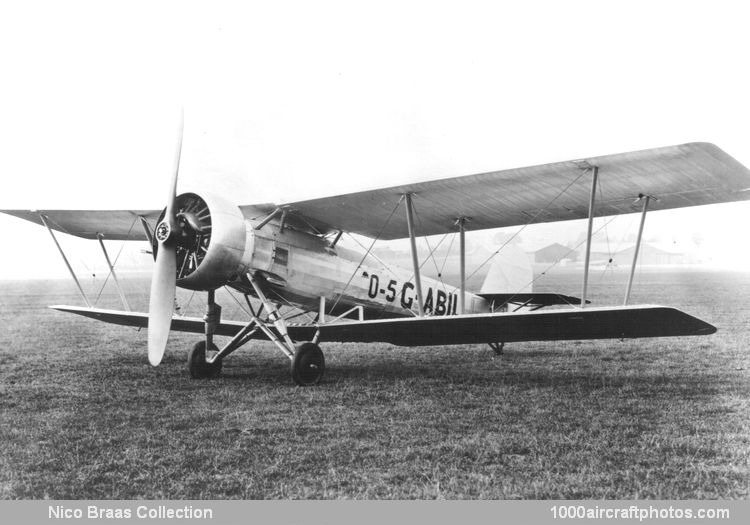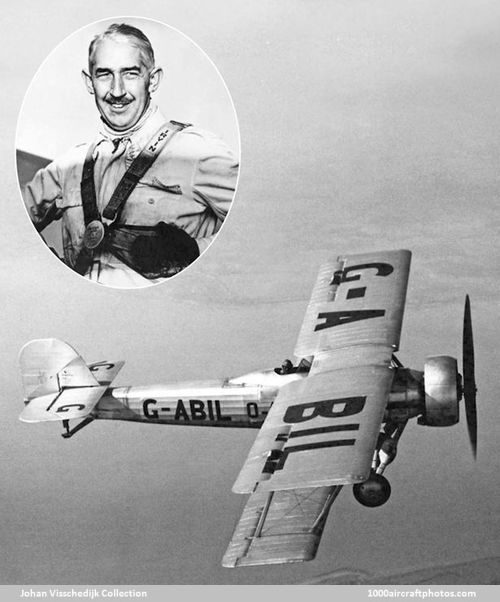Photograph from Bristol, taken at Filton, South Gloucestershire, UK, September 1932
02/15/2023. Remarks by
Johan Visschedijk: "The Vickers Vespa was a single-engined multi-purpose military biplane, produced by Vickers in some numbers under seven different designations:
The aircraft above was originally built in 1925 as the Vespa Mk.I and registrated G-EBLD, subsequently it was modified to the Vespa Mk.II, after the next modification it was redesignated Vespa Mk.VI, but also reregistered as G-ABIL.
The last modification was in 1932, when the aircraft was selected to capture the world's height record. The Vespa had been selected for this effort, as it was the only aircraft available at that time with the required wing area and high-lift capability at height. It was fitted with a supercharged Bristol Pegasus S.3 nine-cylinder radial engine driving a large-diameter propeller. Due to the modifications the aircraft was operating without a valid
CofA and therefore carrying the '
Class B' marking O-5.
/ / / / / / / / / / / / / / / / / Vespa Mk.VII, inset: Cyril Frank Uwins (
Johan Visschedijk Collection)
The record attempt was made by Cyril Frank Uwins, chief test pilot of the Bristol Aeroplane Company, from Filton, were Bristol had its aircraft and engines facilities. On September 16, 1932, the aircraft reached a record altitude of 43,976 ft (13,404 m), improving the previous record with 810 ft (247 m). The previous altitude record of 43,166 feet (13,157 meters) was set from
NAS Anacostia, Washington, District of Columbia, USA, on June 4, 1930, by USN Lieutenant Apollo Soucek, flying the sole Wright XF3W-1 Apache.
In May 1933 the Vespa Mk.VII was sold to the Air Ministry and serialed K3588 it was used by the
RAE for high-altitude research with supercharged engines and variablepitch propellers."

